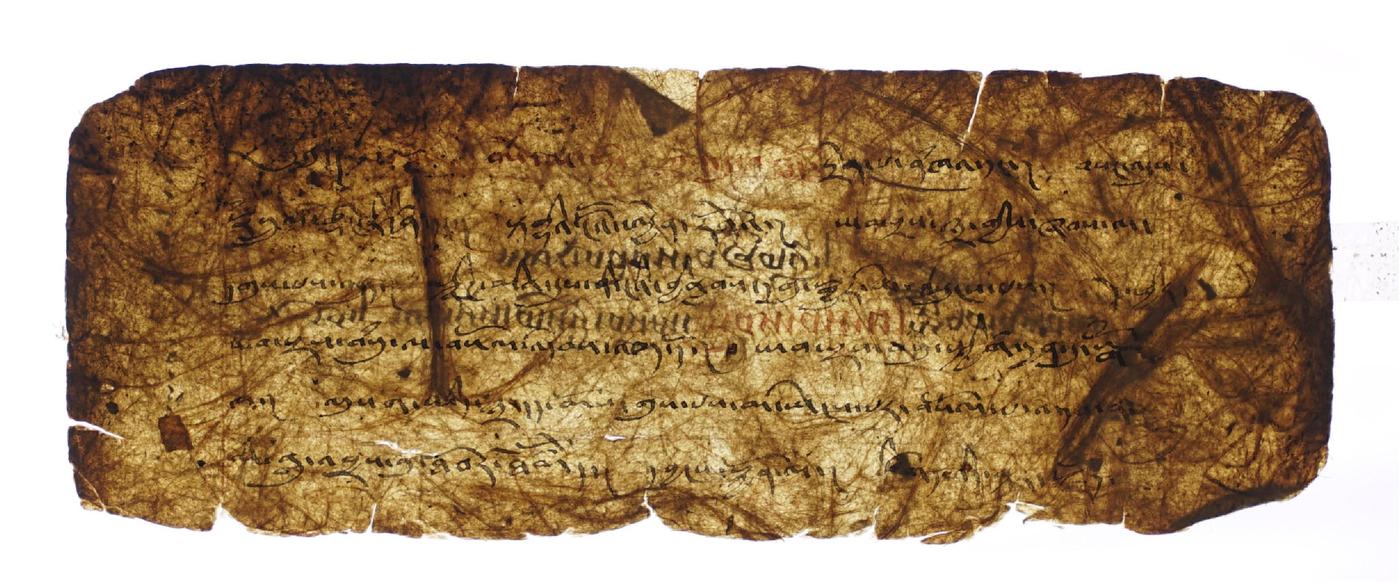DRANGSONG MANUSCRIPTS
| 1. Text number | Drangsong 271 |
| 2. Text title (where present) in Tibetan |
༄༅།། ཡབ་སྲས་གསུམ་གྱི་བསོལ[གསོལ]འདེབས་བསམ་པ་ལྷུན་གྲུབ་བྱིན་རླབས་འཆར[ཆར]འབེབས་བཞུགསྷོ།།༄༅།། ཨོ་རྒྱན་པདྨ་འབྱུང་རྣས[གནས]ཀྱིས[ཀྱི]ལུང་སྟེན[བསྟན]བསོལ[གསོལ]འདེབས་བཞུགསྷོ། |
| 3. Text title (where present) in Wylie transliteration | Yab sras gsum gyi bsol[gsol] ’debs bsam pa lhun grub byin rlabs ’char[char] ’bebs bzhugs+ho/
O rgyan pad ma ’byung gnas kyi lung sten[bstan] bsol[gsol] ’debs bzhugs+ho/ |
| 4. A brief summary of the item’s contents | The theme here revolves around the Master and His Two Disciples in the Bon tradition, primarily focusing on prayers for the blessings of the Padmasambhava and associated prophecy texts. |
| 5. Number of folios | 16 |
| 6. Scribe’s name | |
| 7. Translation of title | Prayers and Blessings of the Master and His Two Disciples for Fulfillment of One’s Wishes
Prophecy and Prayers of the Master Padmasambhava |
| 8. Transcription of colophon | bkra shis/ tshe dbang rig ’dzin gyis bsol[gsol] ’debs bdud rtsi thig pa zhes bya ba zhugs[bzhugs] legs+ho/
phywa btsun drung mu wer zhi yis/ me ’brug zla pa lnga pa’i tshes 1 la/ bdan[gdan] sa rin chen dar ding bden chen pho brang nas/ ’dzam gling rtsug[gtsug] rgyan gshen ston nyi rgyal gyis/ thong[mthong] chog[grol] skyer bas lha khang du sgrigs[bsgrigs] so/ ma rgyur[gyur] mkha’ nyams[mnyam] ’gro drug sems …spros dral[bral] bde chen bon sku sangs rgyas thob par shog/ bkra shis/ dge’o/ |
| 9. Translation of colophon | Blessings. The prayer, the teaching of the essence of the nectar, from the master Tsewang Rigdzin.
In the Dragon year, in the month of May, revised and compiled by Phya btsun Drung mu wer zhi in the Garland of Rebirths Temple of gShen nyi ma rgyal mtshan in the Rin chen dar lding monastery. May all sentient beings who have once been our mothers attain the joy of ultimate liberation. May there be auspiciousness and virtue.
|
| 10. General remarks | Phya btsun Drung mu wer zhi (1634-1695) was the tenth abbot at sMan ri Monastery. However, the main monastic tradition of the Bon institute, self-proclaimed as the authentic Bon, does not fully acknowledge Padmasambhava as one of the three great masters, in contrast to the new tradition. Nevertheless, the author of this document, Phya btsun Drung mu wer zhu, provides evidence of how the worship of Padmasambhava is transmitted in the Bon tradition. Another version can be found in Drangsong 196. |
| 11. Remarks on script | dpe tshugs, ’khyug ma tshugs |
| 12. Format | Loose leaves |
| 13. Size | 7.5 × 19.5 cm |
| 14. Layout | |
| 15. Illustrations and decorations | |
| 16. Paper type | Woven, ply (most likely 2 layers), with abundant fibre bundles in the paper structure, rough with many creases |
| 17. Paper thickness | 0.18–0.25 mm |
| 18. Nos of folio sampled | f. 1 upper right corner |
| 19. Fibre analysis | |
| 20. AMS 14C dating | |
| 21. XRF analysis | |
| 22. RTI | |
| 23. GCMS |


